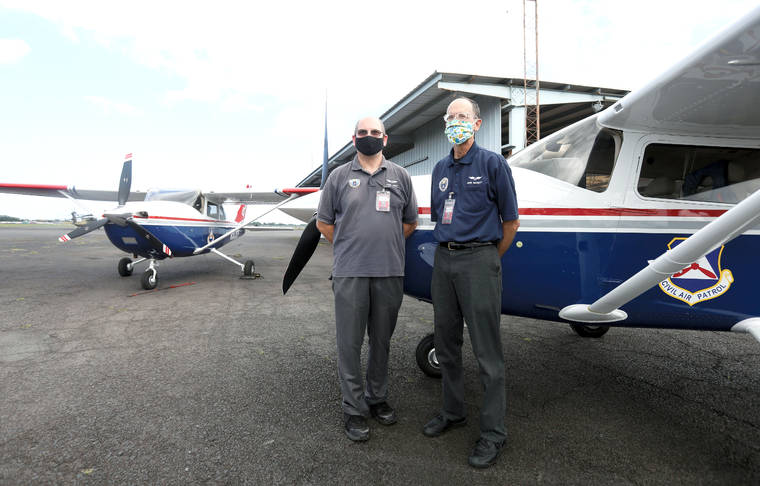Civil Air Patrol pilots successfully completed the first flights of two new Cessna 182 planes that were delivered to Hilo’s Lyman Field Composite Squadron on Sept. 25.
The Civil Air Patrol—or CAP— is a congressionally chartered nonprofit corporation and an official civilian auxiliary of the U.S. Air Force.
In this role, CAP operates a fleet of 560 aircraft across the country and performs about 90% of continental U.S. inland search and rescue missions as tasked by the Air Force Rescue Coordination Center.
On Sept. 25, members of CAP in Hilo were surprised to see two new Cessna 182s in a shipping container, which usually would only have one.
Aircraft mechanics spent more than a week reattaching wings, tails, landing gear and antennae to the planes, which were inspected and ground-tested.
CAP usually receives one new plane every five years, so receiving two at once was a welcomed sight for the pilots. First Lt. John Bassett was one of the pilots to fly the Cessna planes after they were reassembled after shipment.
“It is a joy to fly a new airplane since typical planes are 20 to 30 years old,” Bassett said. “Flying a new plane is very rare, and it was an incredible experience to fly two new aircraft.”
The newest Cessna planes have a glass cockpit, which makes search and rescue missions easier for pilots and emergency responders.
“These aircraft have the newest G1000 glass cockpit system, which provides better displays and excellent situational awareness for pilots,” said Hawaii Wing Vice Commander Paul Hirst. “They will improve out ability to respond to emergencies.”
Providing emergency services is the main mission of the Civil Air Patrol throughout the country. In Hawaii, CAP mostly assists in warning people about oncoming tsunamis and providing photography during eruptions, hurricanes and other disasters.
“Our job is to complete disaster-relief photography missions for eruptions and tsunamis and to alert people that may not hear a tsunami warning,” Bassett said.
Although the Cessna aircraft flew successfully after they were built, they are still in need of camera mounts and the tsunami warning system. The planes can be used for search missions and cadet orientation before those parts are implemented.
The two new Cessna aircraft will replace older planes to keep Hawaii’s fleet of Cessna 182s upgraded. One of the planes will remain in Hilo and the other will, most likely, be moved to stay at Wheeler Army Airfield in Honolulu, according to Basset.
“We were able to paint ‘CAP’ on the bottom of the wings of the new aircraft,” Basset said. “So, if someone sees those letters flying over them, it might be time to head home.”
Along with emergency warnings and response, the Civil Air Patrol also offers aerospace education and a cadet program for adolescents interested in aviation, space, military, STEM and similar career paths.
Adolescents, ages 12 to 18, can apply for the yearlong program and explore future careers while learning leadership skills through flight and physical activity.
Although the number of participants is down, the cadet program has continued during the COVID-19 pandemic without as much in-person activity.
“We have much less activity in the cadet program,” Bassett said. “Cadets meet weekly, and we host more lessons over Zoom, and flying has been down significantly.”
Youth interested in joining the CAP cadet program can learn more at https://www.gocivilairpatrol.com/join/youth-in-cadet-program.
Email Kelsey Walling at kwalling@hawaiitribune-herald.com






